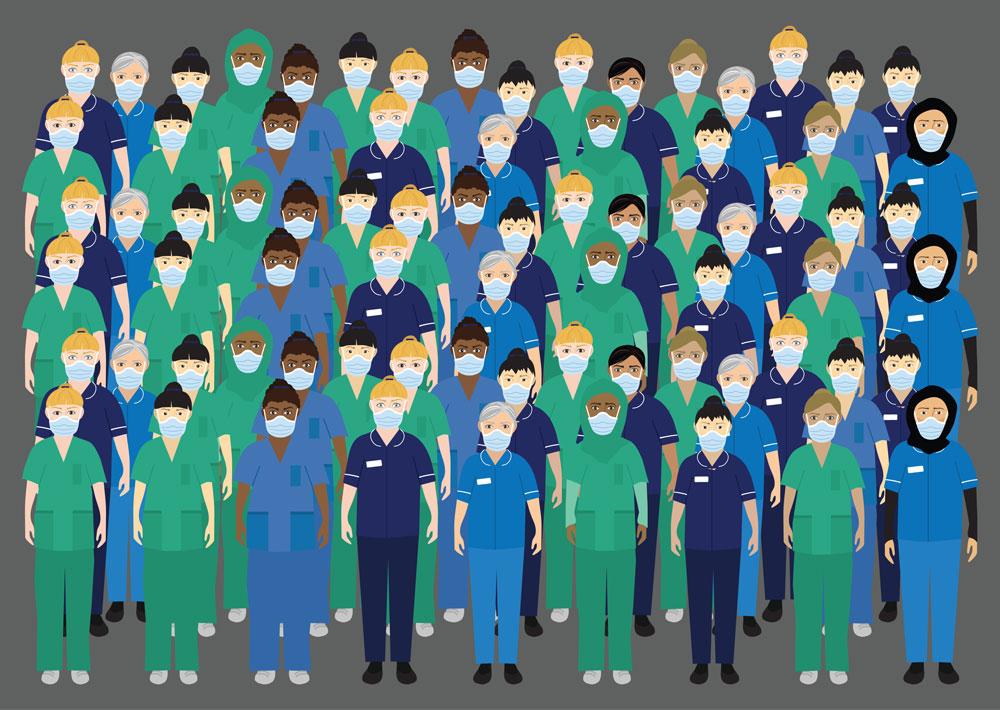Image credit: 4.0 International
Creating green areas for staff and patients to spend time in can make a big difference to their physical and mental health. How can they become more widespread?
There are five words that can improve people’s mental health every day at work: “Let’s get some fresh air.”
In the NHS for both staff and patients, this is no different. NHS Forest reported that green spaces on healthcare sites can speed up post-surgery recovery, and reduce the need for painkillers for patients.
They said spaces such as green gyms and woodland walkways can promote sustainable forms of exercise, and composting facilities can reduce the amount of waste sent to landfill.
The benefit can often be even greater for NHS staff who spend long hours working in clinical environments. With short work breaks and tiring shifts, going to large public green spaces is not always an option.
That’s why researchers from the University of Aberdeen have been awarded a Fellowship to investigate the value of outdoor spaces in NHS sites.
Measuring the ‘natural capital’
The Fellowship is jointly funded by the SEFARI Gateway (Scotland’s Centre of Expertise for Knowledge Exchange and Innovation) and Public Health Scotland and will contribute to the implementation of the NHS Scotland Climate Emergency and Sustainability Strategy building on previous research commissioned by Public Health Scotland and NatureScot.
The Fellowship, undertaken in the University’s Health Economics Research Unit (HERU) will determine how NHS outdoor spaces – known as ‘natural capital’ are used.
This entails the economic value of the health and wellbeing benefits to users like NHS staff.
NHS Scotland’s natural capital is made up of a combination of green and blue spaces. Green spaces can range from gardens with benches outside many GP surgeries and NHS hospitals, to extensive areas with paths for people to walk and exercise. Blue spaces are areas that feature water like streams or ponds. The team is set to use the existing ONS guidance, to design the surveys.
The methods used will directly ask people about their behaviour and how they value different types of outdoor spaces.
Dr Luis Loria-Rebolledo, research fellow in HERU, who is leading the research said: “There are potentially significant health and wellbeing benefits that come from the use of these sites for recreation and leisure. However, the monetary value of these benefits to society, and across different users, is not known.
“Obtaining these values could serve as a guide for future decisions about the use of NHS outdoor spaces in Scotland.
“This project speaks to a priority of the Scottish government who are regularly updated on progress. The outcome is policy relevant and is high impact as it has the potential to inform natural capital accounting and Climate Policy in Scotland and internationally.
“We hope the results of this study will inform future decisions in Scotland and contribute to our understanding of how we can measure and value natural capital across the world.”
Ready and waiting
While it is a positive step to be measuring the value of green and blue spaces in the NHS, there are already a variety of organisations encouraging patients and staff to get outdoors.
The previously mentioned NHS Forest supports healthcare sites to transform their green space for health, wellbeing and biodiversity.
They see providing adequate green space as a win-win, because it contributes to the NHS’ pledge to be net-zero by 2045 as well as improving people’s health and mental wellbeing.
After all, the NHS is responsible for 40 per cent of the public sector’s carbon emissions.
One of their previous projects includes the creation of peaceful gardens, which offers patients and relatives a healing space at a critical time in their lives.
They also created productive growing spaces to provide fresh, organic herbs and vegetables for hospital kitchens, and horticultural skills for volunteers.
Hattie White is the woodland creation and tree planting project manager at NHS Forest, and said she has seen first-hand how these spaces can have a positive impact.
She said: “I spoke to a radiologist at a planting event who said she felt that she was inside all day. She said that being outside made her feel calmer and that it would be so nice to have a green space outside where she could take meetings.”
The NHS Forest is a project run by the Green Spaces team at the Centre for Sustainable Healthcare. Their aim is to enhance the ecological diversity of NHS estates by planting trees, as well as supporting sites to utilise green space to provide therapeutic environments for patients, staff, and local communities.
White added: “The outdoors is an underused, neglected resource that we need to tap into.”
As part of her position, White is pushing for NHS Trusts to make use of trees the NHS Forest is supplying this winter.
Trusts can apply for a range of trees which come in themed bundles, to suit a variety of sized sites including bundles for small spaces, blossom or wild food. But there is more than the tree bundles and they are also offering fruit trees, and tiny forests as well as providing trees for larger woodland creation.
White said planting days are often used as an opportunity for staff and patients to get outdoors, and are a positive activity for everyone involved.
She cited the staff wellbeing study Space to Breathe, which found that staff who said they regularly spent time in their sites’ green spaces during the working day reported significantly higher levels of wellbeing than staff who did not spend time in workplace green spaces.
It also found that a sizeable proportion of staff (44 per cent to 52 per cent) said attractive green spaces were important to them in considering where to work – suggesting that the presence of such areas affects recruitment and retention.
White said she hopes the new government will take green space around hospitals seriously, as essential spaces for well-being and integrate their improvement into policy.
“Green space improvements and tree planting is seen as an add-on, not an essential,” she added.
White said: “Health and nature are connected. Hospitals are obviously quite busy environments and that can impact everyone’s mental health. Green spaces can offer a counterbalance to these environments.”





